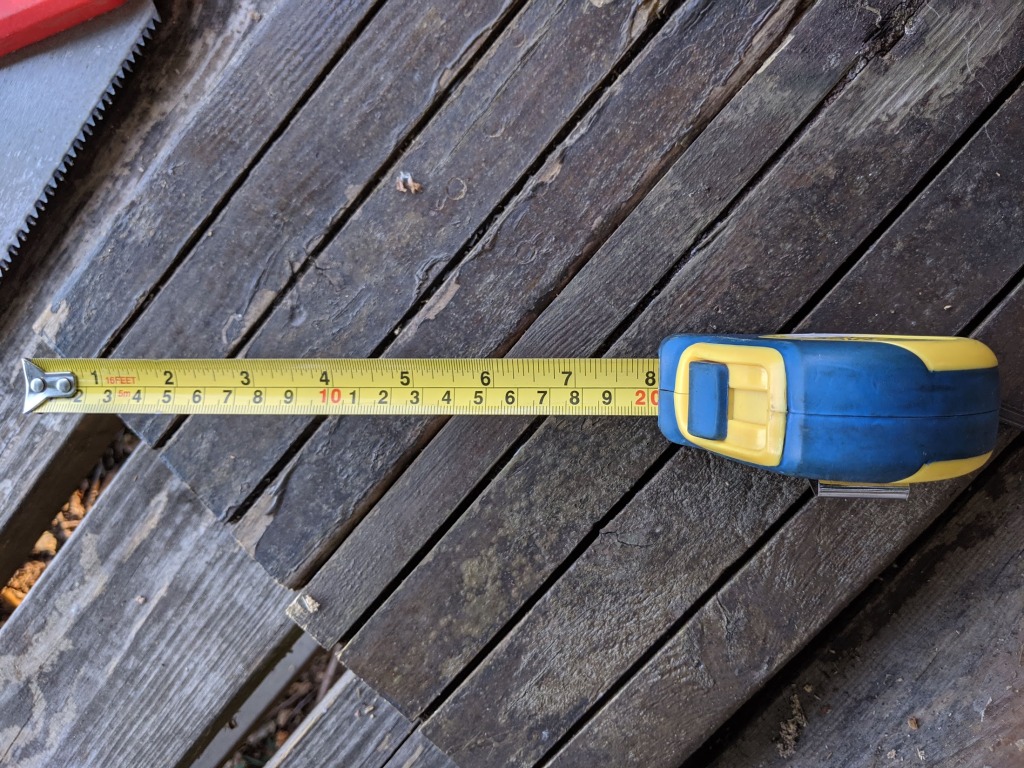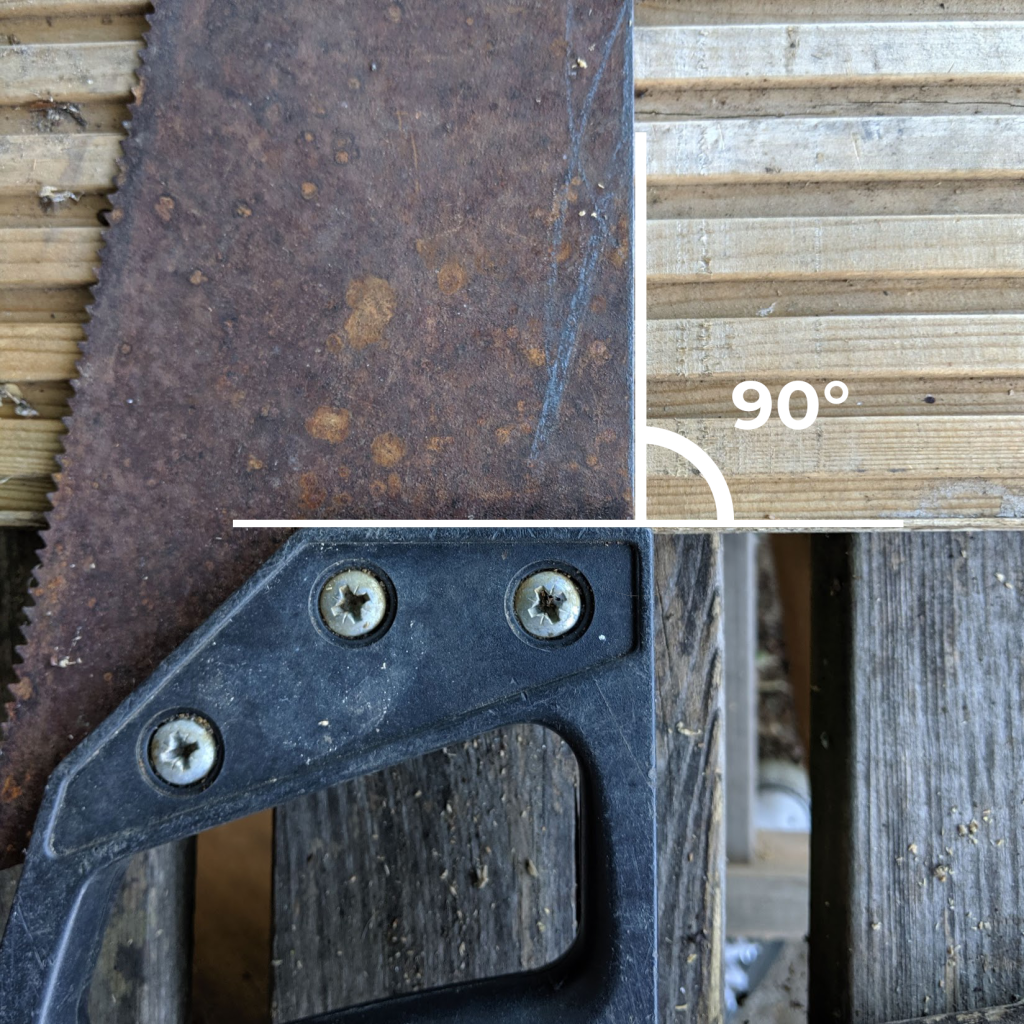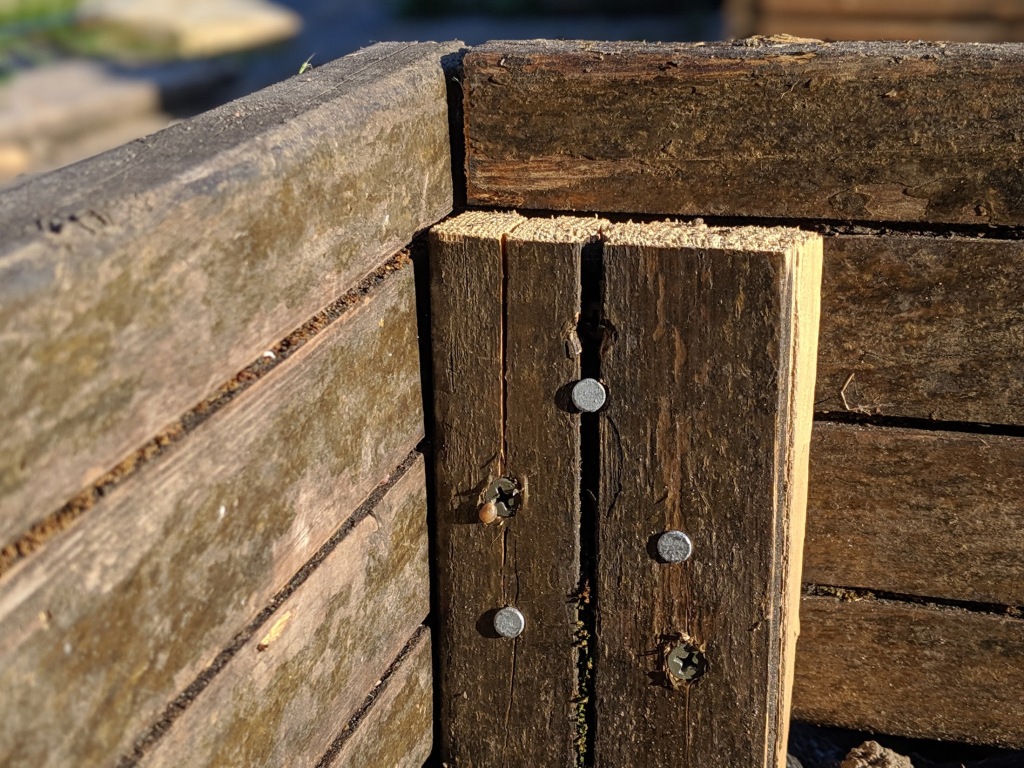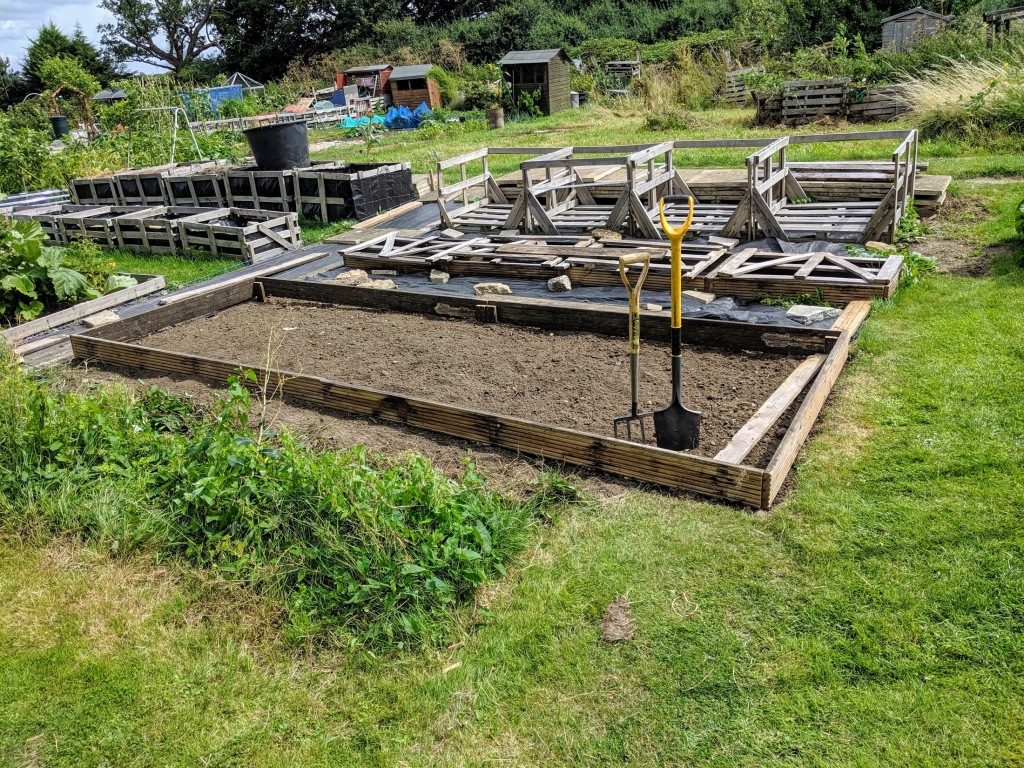It’s amazing what you can do with so very little…
One of the things that I like about having an allotment is that you get to use your hands a lot – whether it’s the delicate drop of a seed from your fingertips, the heave of soil on spade or the finesse of a saw across wood.
As you’ll see above, I’ve been creating new borders on the plot, which means I’ve been cutting a lot of wood, and although I strive for perfection and straight edges, I am by no means a perfectionist, mainly because of the outcome, which I’ve lovingly coined “Allotment chic“.
I’ve been very fortunate to have been given wood that was previously used for decking, and so I’ve been using these boards to create the new beds. Each board varies in length, so they’ve needed be cut to uniform lengths.
Doing things at allotment usually means doing things on a budget, with not much in the way resources to hand – but that doesn’t mean you can’t achieve what you want to.
Essential tools

A pen/pencil or something to mark with. The image to the left is a flat joiners pencil.

A tape measure.

A hand saw to cut things with. Be sure to pick out a nice sharp one, it’ll save you tonnes of time
Lessons learnt
There are definitely some simple lessons I’ve learnt as I’ve been cutting lengths of wood, with little in the way of resources. There are probably dozens more – but these are the main ones.
Measuring twice, cutting once
It’s very easy to get into the habit of cutting a piece of wood, and then use that freshly cut piece as a template for more pieces.
If you’re an expert cutter, then this is the way to go, but if you’re an amateur like me, you’ll know that if you don’t cut accurately enough in the first instance, that inaccuracy will be amplified as you go along.
I’ve learnt through bitter experience that it’s always best to measure each new piece, (maybe twice) before you cut a new piece.

Finding and marking a 90° angle
I had a real mind blown moment when someone pointed this out to me. I always thought I needed a trisquare to get a 90° angle and mark a straight line to cut against…
However, that’s not the case. If the handle on your saw has a straight edge, you can easily find and mark a straight, 90° angle.

Using a guide to keep a straight cut
I’ve gotten into the habit of using a scrap piece of wood to help keep the saw level and straight as I cut. Generally speaking these pieces of wood will have far straighter edges to work against.


With scrap or second hand pieces of wood – you’re going to have lines and edges that are much more accurate than what you’re going to be able to achieve on you’re own with limited tools.
These lines and edges are great to work against, whether it’s using them as a cutting guide or for placement purposes. Definitely work against these lines as much as you can, as it can save a lot of time.

Letting go of perfection
As I mentioned earlier – perfection is always achievable, especially at an allotment, so do the best you can but ultimately set your expectations low.
Anything you build is a bonus, and you’ll look back at the end of the day and still get a great sense of achievement.

The satisfaction is in the building not the build 😉 .
I’m always on the look out for hints and tips to improve the outcome of the things I build – I’d love to read some in the comments below.




Leave a Reply